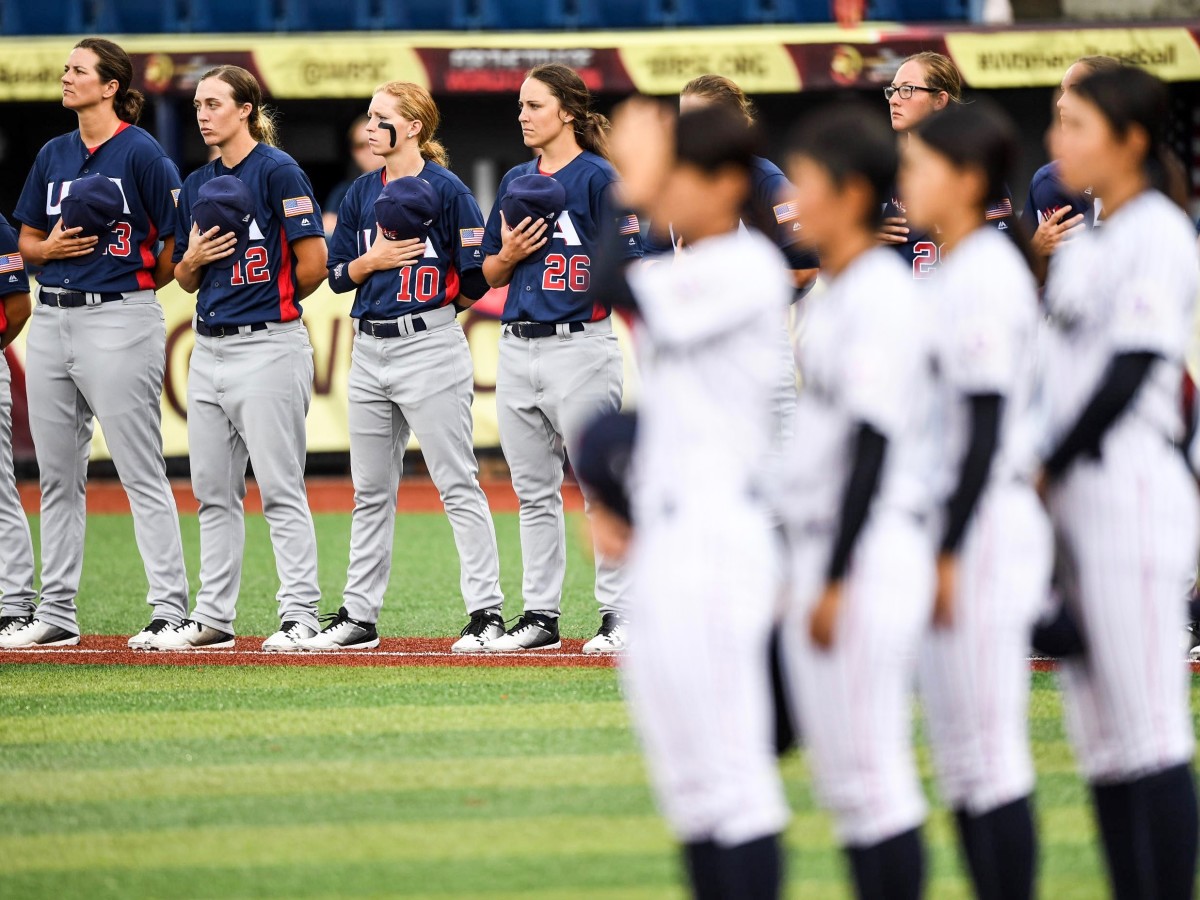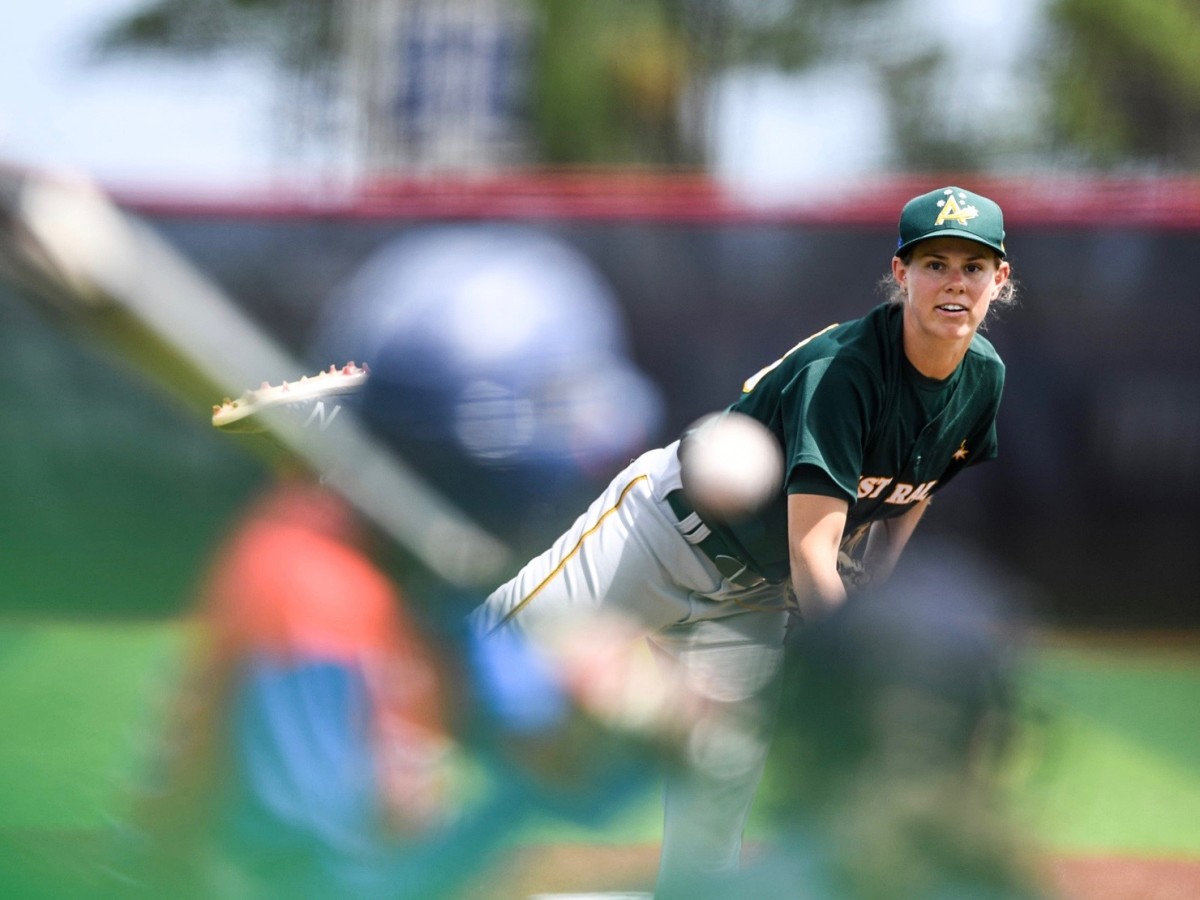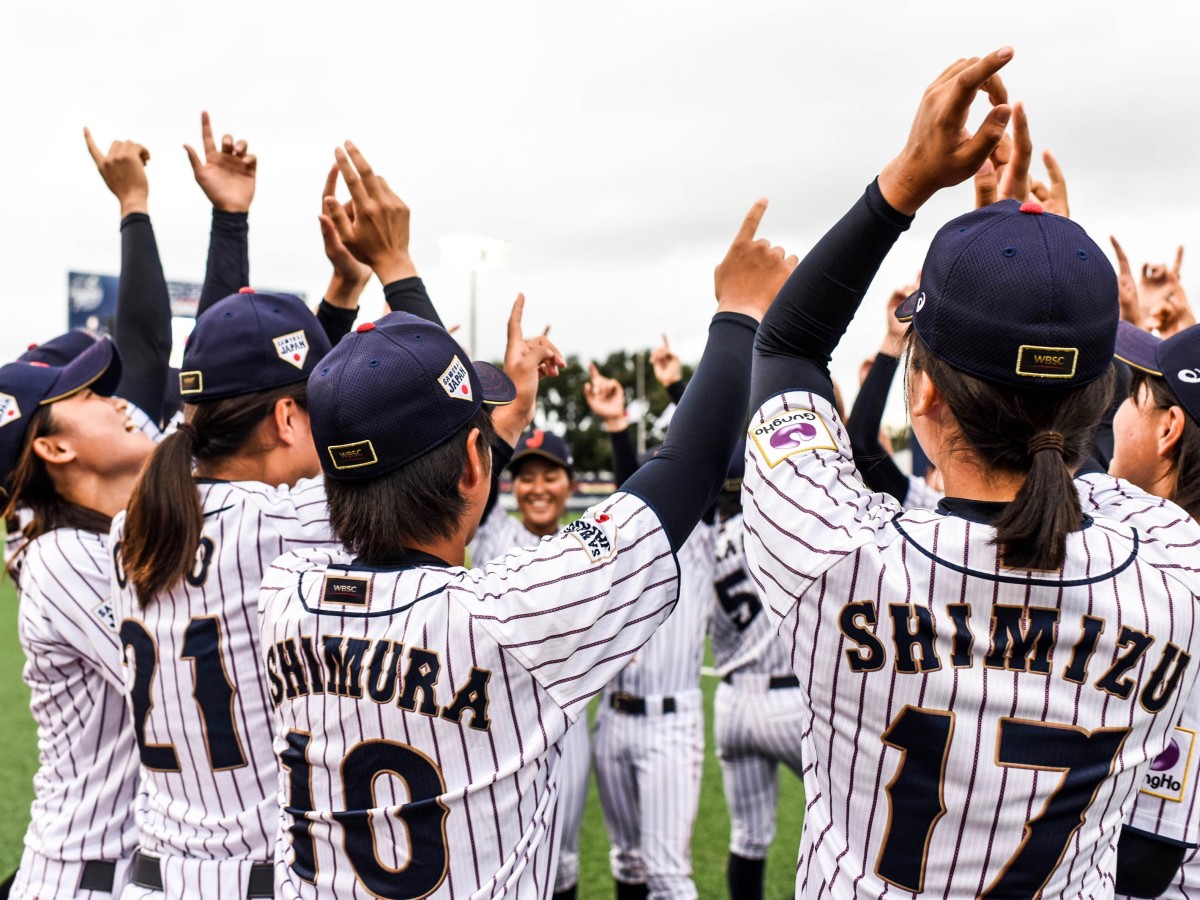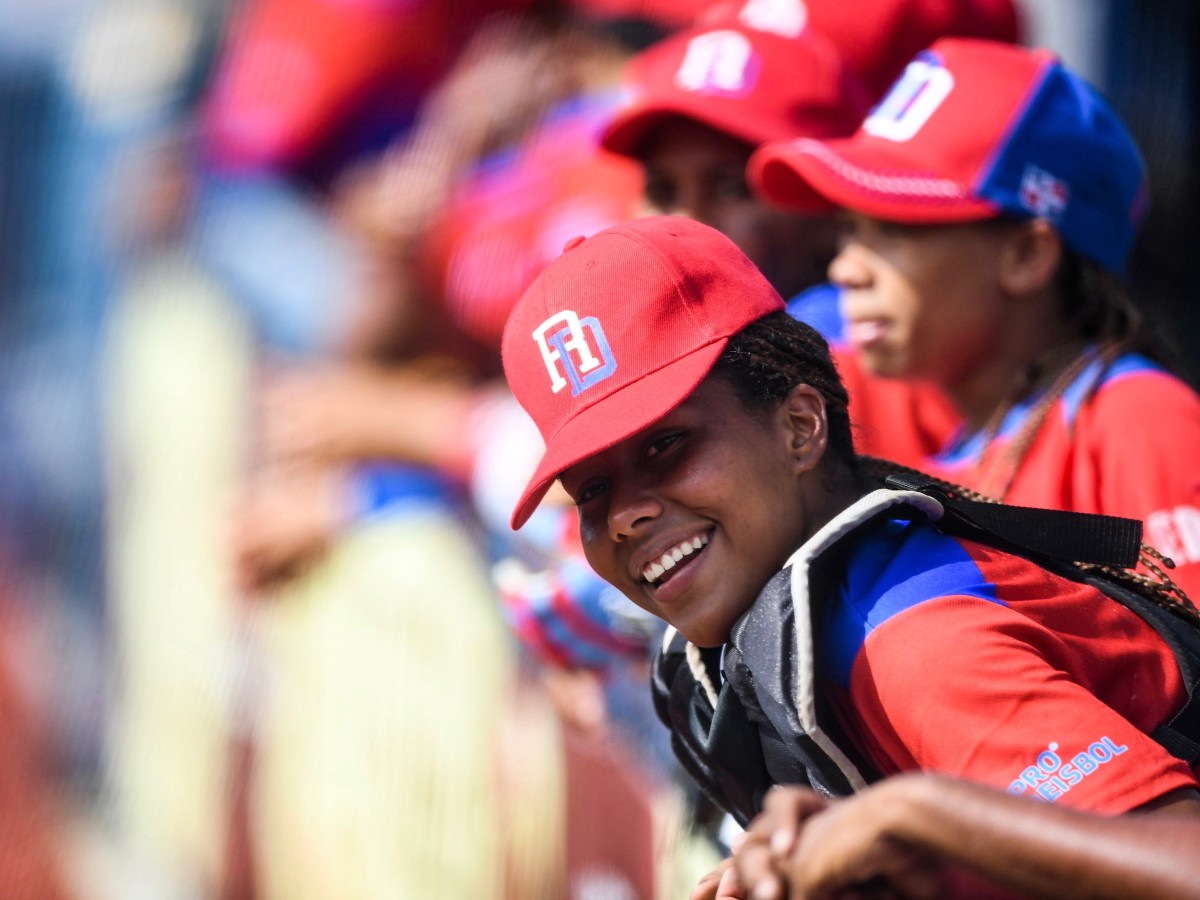Growth of a New Game: Inside The Women's Baseball World Cup

It’s just mid-morning, but the air is already so choked with heat that the stadium bathes in a sticky sheen. While there’s plenty of space in the stands, no one moves to take the good seats behind home plate. Instead, the small crowd seeks refuge in a tiny pocket of shade up the third-base line as the turf below bakes and edges toward a triple-digit temperature.
This is the Washington Nationals’ old spring training complex in Viera, Fla. It is, in other words, a brutal place for a vacation in late August.
Kelly Oder doesn’t mind. She has traveled from her home in Wichita, Kan., and she will come back tomorrow and the next day and the next.
“I took a twelve-day vacation just to come here,” Oder says. “Everyone asked, ‘you’re taking vacation to watch baseball?’ I’m like, best vacation there is.”
She pauses.
“And it’s women.”
This is the first game of the 2018 Women’s Baseball World Cup, with Japan playing the Dominican Republic. The tournament has been held every other year since 2004, but this is the first time that it is being hosted in the United States. It’s the world’s biggest stage for women’s baseball; for several of the participating countries, it’s the only stage for women’s baseball.
Oder played growing up in Penfield, Ill. There was no girls’ team available, so she first attempted to join her local boys’ team in 1976—just two years after the landmark lawsuits that pushed Little League to allow opportunities for girls to play, too.
“When they passed out uniforms, they didn’t give me one,” she says. “My mom had to go to the coach’s house and say, ‘No, I read the rulebook, girls can play.’”
The history of women’s baseball is nearly as long as that of baseball itself. (There’s evidence of women in the game as early as the 1860s.) But it is a history of women playing just as much as it is a history of women battling for the right to be on the field in the first place. There is no example of the former without the latter, and the story goes beyond the most famous example of the women’s game: The All-American Girls Professional Baseball League of the 1940s and ‘50s, which kept the sport going while men were away at war and was memorialized in the film A League of Their Own. The AAGPBL played its final season in 1954, but there have been girls and women fighting to play ever since. In an environment with few opportunities for girls to play baseball at all and even fewer opportunities for them to play with each other, they often stand out as the only female players on their Little League teams or high school squads. They resist external pressure to switch to softball, a game with a bigger ball and a smaller field. The pitching is different, the baserunning is different; so is the strategy. So in order to play baseball, these girls take a path that is often isolating and always fraught.
The United States’ women’s national baseball team wants to change that.

***
“We all have different stories, but they’re all very similar—in terms of what we’ve had to do, the sacrifices we’ve had to make to get here and play at this level,” says Meggie Meidlinger, a pitcher on Team USA since 2006. She was the only girl on her Little League team, and then she was the only girl on her high school team. Sports Illustrated featured her in “Faces in the Crowd” when she became the first girl to throw a perfect game for a boys’ varsity team in the state of Virginia. Switching to softball “just was never an option,” she says. Meidlinger loved to pitch, and she wasn’t willing to surrender it.
The squeeze toward softball is strong. There’s infrastructure and support of high school teams and college scholarships at stake. A girl who plays baseball has none of that—but she does typically have the burden of being the only one on her team. Most of these girls do not play with boys to prove any point about gender or make any grand statement about equal opportunity. They play with boys because it’s the only way for them to play at all. “It can be lonely when you’re the only girl playing on a boys’ team,” says first baseman Malaika Underwood, 37. “It just feels like you’re on an island.”
But some of these girls are pushed off the island before they have the chance to set up camp. For many, converting from baseball to softball isn’t presented as a choice. It’s simply a reality that they’re expected to accept.
“I was told to switch over, because girls didn’t play baseball,” says third baseman Michelle Cobb, 31. “They weren’t going to let me play in high school, and we didn’t have it in middle school, so that was it.”
Cobb would go play softball for Florida State, but she discovered the women’s national baseball team after graduating. She trained by herself throughout 2011 and first made Team USA in 2012. But her background in softball has only emphasized what is clear to anyone who knows both games: “They’re completely different sports. The strategy is entirely different.”
The biggest misconception about women’s baseball, the players say, is that it’s actually just softball. But it isn’t, and the distinction is essential.
“Since I was four years old, I’ve played baseball,” says 17-year-old Ashton Lansdell, the youngest member of Team USA. “I’ve been to one softball practice, and I hated it.”
***
The Women’s Baseball World Cup is young, but it’s grown quickly, and that growth has helped women seeking to play and in the dreams they dare to hold. The 2004 World Cup featured five teams. The U.S. was joined by Canada, Japan, Australia and Chinese Taipei; America cruised to a gold medal after five wins and one loss. The 2018 World Cup featured 12 national squads, and several others tried to earn a berth in continental qualifying rounds. The talent pool is not only bigger—it’s deeper. The tournament is still such a recent development that its entire history can fit in the career of a single player, but its existence has allowed advanced development of younger players.
Those early teams comprised women who weren’t allowed the dream of playing with and against one another, let alone on an international platform. If a woman wanted to play as an adult, she could find a recreational men’s league, work out on her own, or leave the game altogether to pick up softball. Underwood, the first baseman, holds USA Baseball’s record for the most national team appearances by anyone, man or woman. But the women’s national team wasn’t established when she graduated college, let alone when she first pursued baseball as a young girl. She discovered the women’s team as an adult only by accident, searching online for a local men’s league to play in, just before the open tryouts for the second World Cup in 2006.
Now, some of Underwood’s teammates now are less than half her age. The 2018 Cup’s youngest players have never played in a world without international women’s competition; as teenagers, they’ve been able to set their sights on the women’s national team as the ultimate dream.
“I’d looked up all my current teammates. I knew so much about them before even meeting them,” says 17-year-old Emily Tsujikawa. “Seeing them in real life and them telling me advice, it’s like I’m starstruck.”
The structure of women’s baseball remains something of a floating platform without any coherent pipeline, but it exists. That, in and of itself, can be enough to relieve some of the loneliness that’s traditionally been an inextricable part of being a female ballplayer.

***
The American mainstream has seen one high-profile mainstream example of girls’ baseball in the last decade: Mo’ne Davis, who shot to fame with her pitching prowess during the 2014 Little League World Series. (Now 17, she’s focused on basketball.) Davis was the lone girl that year on a team from the United States, but she wasn’t the only girl in the tournament. There was another—Team Canada’s Emma March, now representing her country at age 16.
“I feel less pressure on this team, because the whole spotlight isn’t turning on me,” she says. “It’s more comfortable, I’m more easygoing, I’m less stressed out… With the boys, everyone came out like, ‘Oh, it’s the only girl in Canada, gotta watch the girl.’”
To be the only girl on a boys’ team is to accept life under an unrelenting and inescapable spotlight. Anything a player does will be defined, first and foremost, by her gender; her performance is evaluated not just as an indicator of her own abilities, but of female baseball players’ as a whole.
“It’s like the weight of women’s baseball on your shoulders,” says Team USA’s Veronica Alvarez, now the squad’s pitching coach after playing in three World Cups.
To be on a women’s team, facing other women’s teams, is to play baseball as they want to play it. But that idea is rarely represented in mainstream discussions of the women’s game. Look at the most prominent recent cultural example of women’s baseball: FOX’s Pitch, a television show about the first woman to play Major League Baseball. Team USA’s women say that they repeatedly encounter the assumption that if they want to play baseball, they surely must want to play with men—which leads, of course, to questions about whether any woman could ever do so at the highest level. But that isn’t their goal.
“We don’t want to break into MLB,” Alvarez says. “We just want to create opportunities to play with other women.”
They don’t want to be big leaguers because the women’s game is fundamentally different by design. The dominant style is small ball—plenty of manufactured runs, with aggressive baserunning and bunting. Some players provide power (Team USA’s Megan Baltzell cleared the fence twice during this World Cup) but home runs are still uncommon enough to merit clearing out the entire dugout in celebration. For the most part, the women’s game looks like classic situational baseball. Team Japan, for instance, had 24 sacrifice hits in their nine tournament games. There are 12 MLB teams who had fewer sac hits through all of last year.
The average pitcher throws a fastball sitting in the low 70s and a breaking ball in the low-to-mid 60s. It’s more common to dominate with offspeed stuff than focus on velocity. The best women’s curveballs top 2,500 revolutions per minute, just about the average spin rate for a curve in MLB. And even when it comes to the heater, the focus tends to be on crisp mechanics rather than the ability to overpower the hitter.
“The women here are super accurate,” says Tsujikawa, who pitches for her boys’ varsity team back home in Washington State. “They have a whole bunch of different offspeed pitches and different techniques. The little things in this game matter more… The women will focus more on trying to deceive the batter, rather than just plain speed.”
The opportunity to play on a women’s team, then, is more than just an opportunity to tap into a different kind of camaraderie and escape the constant weight of the “only one” label: It’s a chance to play a different type of baseball. For the women of Team USA, it’s their only chance. For women elsewhere, the situation is different.
***
The U.S. captured the gold in that first Women’s Baseball World Cup in 2004, and again in 2006; Japan took the silver medal behind them both times. Since then, Japan has won every World Cup since 2008.
How? The country has established girls’ baseball tournaments at the youth and high school levels as well as a four-team professional women’s league, the only of its sort in the world.
“We have a path for girls. Girls can have a dream now: ‘Oh, we can get paid to play baseball.” says Hiroko Yamada, the director of international affairs for the Baseball Federation of Japan. Yamada also chairs the women’s baseball commission for the World Baseball Softball Confederation, which oversees both the Women’s Baseball World Cup and the World Baseball Classic.

The Japan Women’s Baseball League began play in 2010, founded by the president of a health food company who was impressed by a girls’ high school tournament and wanted to create a dedicated space for women to make a living through the game. But Yamada emphasizes that the country’s investment in baseball goes beyond the work of one person or organization. Even before the launch of the professional league, Japan was focused on creating a pipeline for female players. “Schools, schools, schools!” Yamada says, clapping her hands for emphasis, when asked about the key to developing the women’s game. About 25 years ago, a grassroots movement began to increase girls’ participation in youth baseball—a movement successful enough for a group of five high schools to host their own girls’ teams. That group has grown larger with each passing year, and there are now dozens of high schools with girls’ squads.
Japan’s development of the women’s game could be replicated anywhere, Yamada says. The U.S. faces some particular challenges—the entrenched cultural pressure for girls to convert to softball, and the importance of college athletic scholarships—but there’s room to build. “Everyone says, ‘Oh, Japan is so lucky to have this,’ but fifteen, twenty years ago, we didn’t have anything.” Japanese women’s baseball has grown through a flywheel effect, she explains. A small initial investment has paid off enormously.
Japan, once again, entered this year’s event as the heavy favorite, and the team demonstrated why with the first out in the first inning of the team’s first game.
Starter Rina Taniyama began the tournament’s opening contest against the Dominican Republic by allowing an uncommon lead-off walk. Then the runner wandered just a half-step off the bag, and she was gone, the victim of a silky smooth pickoff move. Taniyama would not walk another batter for the rest of the day, but she would strike out nine. Japan won, 8-0. Mistakes are rare for Japan, but they make opponents pay for theirs. Japan built a 9-0 record in 2018 World Cup play, including an easy shutout in the championship game to win gold over surprise contender Chinese Taipei. Their ace, Ayami Sato, defended her consensus title as the world’s best female player by winning her third straight World Cup MVP. Japan outscored their opponents by a margin of 63–4, and they did not allow any team to score more than one run against them. Japan now has a streak not just of six world titles, but of 30 World Cup games. They haven’t lost since 2012.
Yamada points to an annual survey of Japan’s 11-year-old schoolchildren, which asks what they want to be when they grow up. The most popular answers are typically pie-in-the-sky dreams, with careers like “pet store owner” and “pastry chef” coming on top. In recent years, though, one answer has rocketed up the list of girls’ responses: baseball player. Now, for the first time, it has cracked the top ten.
The Japan Women’s Baseball League is small. There has been no expansion beyond the four teams who began play eight years ago, and attendance rarely exceeds a few thousand fans; the league allows players to make a living, but just a modest one. And yet, beyond any of these numbers, the impact has been profound. It has made “professional baseball player” a crazy dream for little girls, just as it’s long been for little boys.
***
The United States has, in the last few years, taken steps toward building a grassroots movement. At the forefront is Baseball For All, a nonprofit founded by Justine Siegal, MLB’s first woman to throw batting practice (Cleveland Indians, 2011 spring training) and first to be employed as a coach (Oakland A’s, 2015 instructional league). Now, she has dedicated herself to creating baseball opportunities for young girls. Three years ago, Baseball For All launched the United States’ first national tournament exclusively for girls.
In 2017, MLB got in on the action by serving as the joint sponsor for a similar project. The Trailblazer Series brought 100 preteen girls to play together for one weekend, and it’s now becoming an annual event.
“If I’d had an opportunity like that when I was that age, I would have been blown away,” says Meidlinger, who served as a coach for the tournament.

The Trailblazer Series is just three days. Almost all of the tournament’s participants are the only girls on their local boys’ teams and almost none have ever had the chance to play with other girls.
“They all come together and immediately connect. You just see this gasp, relieving this pressure—the weight of the sport on their shoulders is gone,” says Alvarez, who also served as a coach. “They’re proving that they can play baseball.”
The U.S. entered this year’s World Cup as a No. 3 seed, behind No. 2 Canada and No. 1 Japan. For the second tournament in a row, though, Team USA did not medal. The differences between their program and a powerhouse like Japan’s were clear and damning in Japan’s 3–0 win over the U.S. in the tournament’s second round.
In an exasperating second inning for the U.S., the first runner, Japan’s Chihiro Funakoshi, had reached on an error by second baseman Amanda Gianelloni, who rushed an off-balance throw that first baseman Malaika Underwood couldn’t dig . The play was just possible enough to be maddening, but not possible enough to be viable. Funakoshi then stole second, advanced to third on a bunt single expertly applied down the line by Ayaka Deguchi and scored on a wild pitch. Deguchi, too, would later advance on a bunt and go on to score.
The inning was a study in the little things—the shapeless collection of hustle and technique that coaches love so dearly. It’s a well-placed bunt, a sharp eye for a stolen base, a pair of perfectly soft hands on defense. These skills are far easier to hone when a team has the opportunity to train together, when players can experience regular competition, when the game can be a career rather than an unpaid passion. The little things are far easier when the big thing is not a player’s right to be on the field in the first place.
Despite the U.S.’s fourth-place finish, the game belonged to the women of baseball for two weeks—some female umpires on the diamond, a few female scorers in the press box—in a way that felt both entirely natural and quietly radical.
“There’s a misconception that women can’t play baseball, as people understand and have seen baseball played,” Underwood says. “But the truth is that we can, and we can do it at a really competitive level.”
